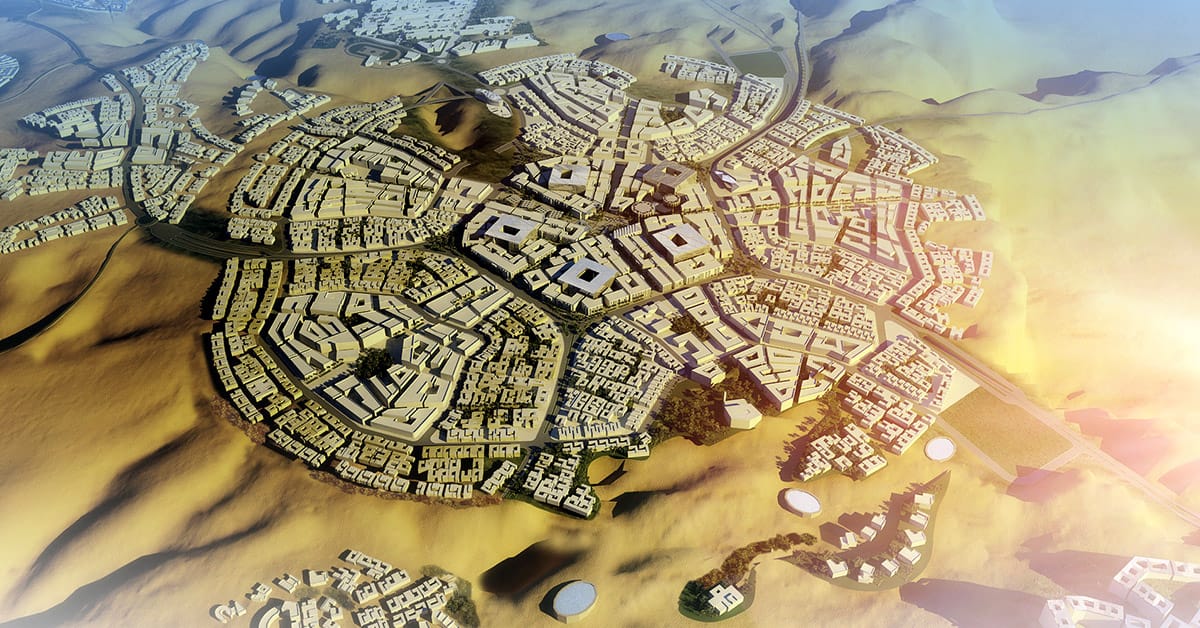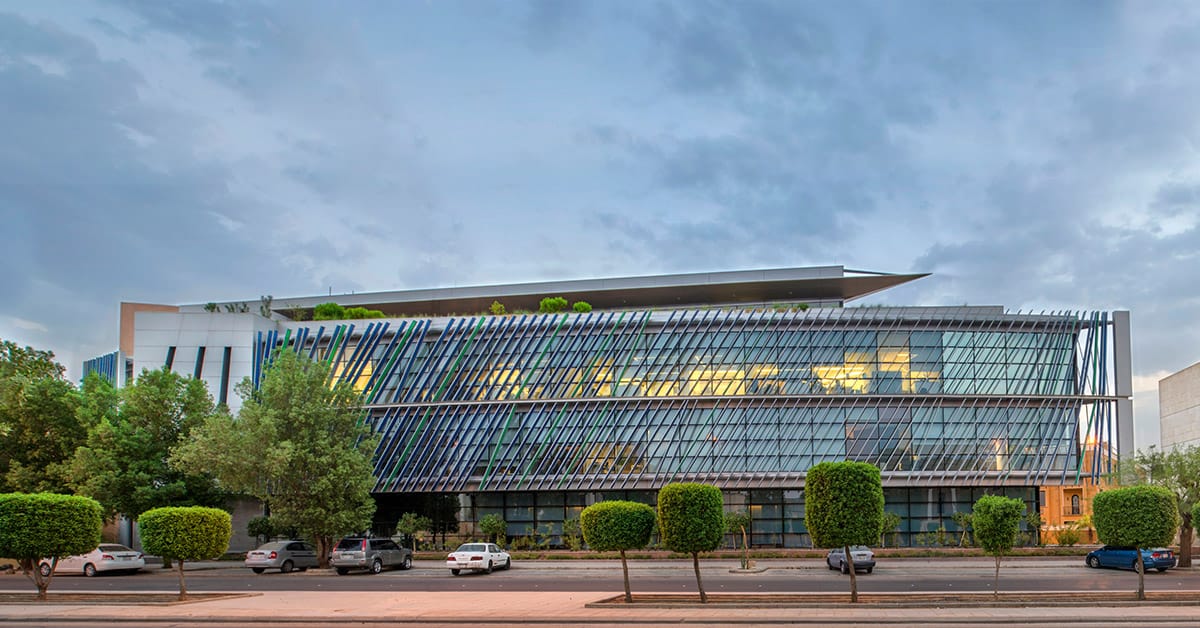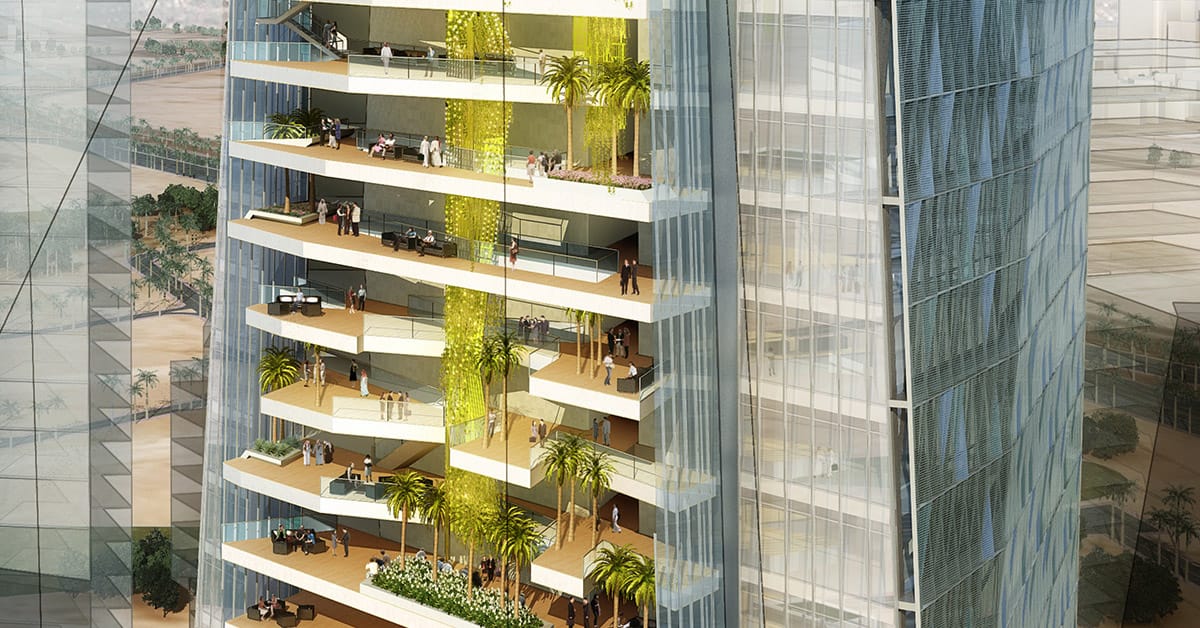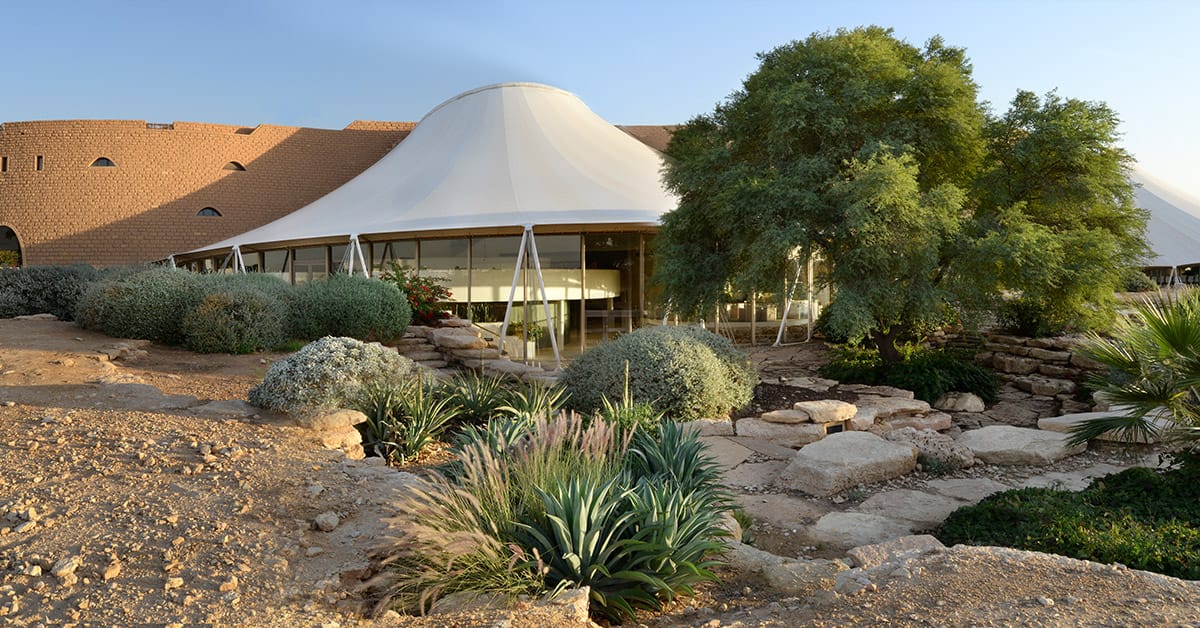 King Abdullah City for Atomic and Renewable Energy (KA-CARE). Our urban design proposal for a net-zero emissions city in Saudi Arabia is built around renewable energy, sustainability, and resiliency, incorporating new technologies and lessons learned from vernacular architecture. 3D Render © Omrania / Barton Willmore
King Abdullah City for Atomic and Renewable Energy (KA-CARE). Our urban design proposal for a net-zero emissions city in Saudi Arabia is built around renewable energy, sustainability, and resiliency, incorporating new technologies and lessons learned from vernacular architecture. 3D Render © Omrania / Barton Willmore
.
This post is part of our Design Ethos series, which explores the deeper thinking and intentions behind Omrania’s work. We strive to create functional, livable, contextual, sustainable, and timelessly beautiful places.
By: Mahmoud Abughazal – Head of Architectural & Interior Design. June 2017
In the most holistic sense, our aim is to design environments that are inhabited and renewable by successive generations in harmony with nature. This is the essence of our commitment to sustainable design. In more tangible terms, sustainable design begins with resource-effectiveness: the effective use of energy, water, and building materials.

Waha (Oasis) Office Building, Riyadh, home to the offices of Omrania and Deloitte & Touche. The building’s high-performance facade has external fins and perforated panels that admit daylight but sharply reduce solar gain, thereby saving on the size of the HVAV installation and operational energy costs. Photo © Dhafer Al-Shehri / Omrania
Since resource consumption can be measured quantitatively, we can easily track progress on this front. However, resource-effectiveness goes beyond efficiency, defined as more output achieved with less input. Embracing energy-efficient and cost-efficient solutions is only the beginning. We look for the most beneficial, useful, transformative, and therefore effective allocation of the available resources.
This approach is simultaneously good for the planet and good for the client. To be effective means taking into account questions of quality as well as quantity. It means evaluating which sustainable design technologies are most appropriate for the needs of each situation. We reject a one-size-fits-all approach in order to find the most resource-effective design strategy for a given program and context.

Saudi Electricity Company (SEC) headquarters, Riyadh. Currently in construction, the SEC headquarters complex features numerous energy-saving features including a vast rooftop photovoltaic array, off-peak cooling plant, and external shading devices. Its garden terrace and landscape design uses drought-tolerant plantings and water-recycling technology. 3D Render © Omrania
Omrania’s approach to resource-effective design embraces the latest emerging technologies and lessons from vernacular architecture. Keeping the practical demands of construction and maintenance always in mind, our multidisciplinary architecture and engineering teams develop and deploy sophisticated building envelopes, active and passive solar design, smart building systems, natural lighting and ventilation, and locally-sourced building materials. We balance human comfort and convenience with resource-conscious design solutions.

Samba Bank headquarters proposal, Riyadh. This green building proposal was conceived with solar-efficient massing and orientation, a high-performance enclosure system, optimized mechanical and plumbing systems, and a vertical garden atrium. 3D Render © Omrania / HOK
The history of architecture in the Arab world offers many instructive for conserving resources, particularly water, and for adapting to strong sunlight and heat through shading, screening, orientation, ventilation, and other techniques. Many of these techniques are highly adaptable to modern buildings, but with different methods or materials and new forms of visual expression.

Tuwaiq Palace, Riyadh. This award-winning cultural and diplomatic facility, designed with Frei Otto and Buro Happold, combines the thermal mass of traditional masonry construction with lightweight tensile shading elements.
In addition to resource-effectiveness, our sustainable design strategy includes durable construction and resilient systems. These and many other components of our Design Ethos will be discussed in future posts.
Omrania, a renowned architecture firm, has established a reputation for excellence in blending aesthetic and functional design, setting a benchmark for architecture firms in Riyadh, Saudi Arabia.







